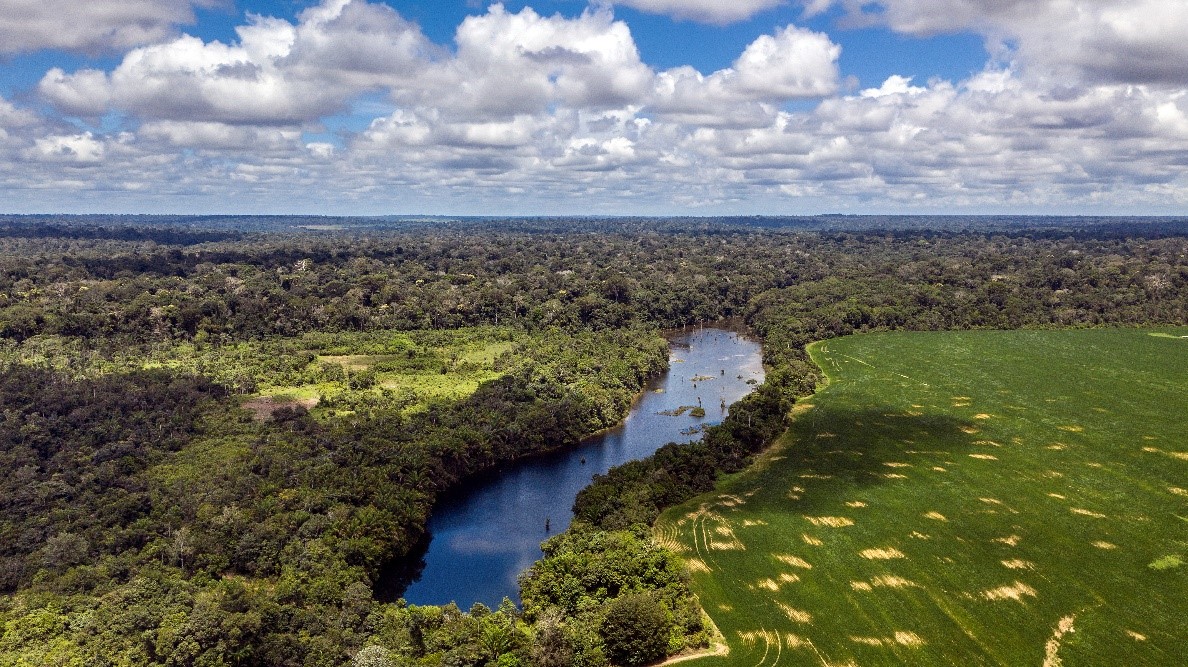 Earth & Space
Earth & Space
Rethinking priorities in conservation planning to tackle the biodiversity crisis
Freshwater ecosystems are the most threatened in the world yet hardly considered in conservation planning. We show that current conservation efforts focused on terrestrial biodiversity do not guarantee protection for freshwater species. However, the solution is not far away: integrated terrestrial-freshwater conservation substantially improves freshwater protection without undermining terrestrial species.

Freshwater ecosystems cover a tiny portion of the Earth surface yet host an outstanding biodiversity. About one tenth of all known species inhabit rivers, streams, lakes, ponds, or floodplains. They are also essential to human well-being providing us with food, clean water, and leisure. Freshwater ecosystems are also the most threatened in the world, even more than terrestrial and marine equivalents. Habitat loss and degradation, over-exploitation and over-fishing, pollution, dam building, the introduction of non-native species, and climate change are among the main pressures.
Biodiversity conservation initiatives are usually centered on the creation of protected areas (e.g. nature reserves, national parks), but can also involve the restoration of forests and rivers, or management of endangered populations. An important step in putting such initiatives into practice is prioritizing territories. This is because it is unlikely, and economically impossible, to protect all lands and rivers of interest. Therefore, it is key to select a few strategic places (i.e. priority areas for conservation) where we can conserve as much biodiversity as possible. However, the selection of priority areas for conservation mostly focuses on protecting species that live on land, following the assumption that freshwater species will be protected incidentally.
The Amazon River basin is the largest and most biodiverse in the world and is under constant intensive pressure from deforestation and agriculture expansion. The study, undertaken by the Sustainable Amazon Network – a research collaboration involving scientists from Brazil, Europe, USA and Australia – looked at how well freshwater species are protected through conservation efforts that prioritize areas focusing on terrestrial species, and how freshwater protection can be improved.
In our work, we studied almost a hundred small streams, multiple plots of forest, and more than fifteen-thousand species in the Brazilian Amazon, including: fish, dragonflies, mayflies, stoneflies and caddisflies, and land species represented by plants, birds, and dung beetles.
We found that land-based conservation initiatives are likely to protect just 20% of the freshwater species that would have been protected through freshwater-focused conservation campaigns.
Next, we investigated if conservation actions, that address both freshwater and land species, can enhance freshwater protection. Through integrated planning that incorporates information on both freshwater and terrestrial species, we found that protection of freshwater species can be increased by up to 600% with no reduction in terrestrial species protection. This presents a great opportunity for conservation, where protection for one species group does not harm the others and does not cause significant funding increases.
With our work, we have proved that we cannot take the conservation of freshwater biodiversity for granted. To address the freshwater biodiversity crisis, freshwater ecosystems need to be at the center of conservation planning. Conservation strategies that think across ecosystems and habitats can provide substantially improved outcomes compared to more narrowly focused efforts. The importance of these findings spans beyond the Amazon River basin and can be used as a guide to identify priority areas elsewhere.
Original Article:
Leal, C. et al. Integrated terrestrial-freshwater planning doubles conservation of tropical aquatic species. Science 370, 117-121 (2020).Next read: Staying ahead of the wave: predicting fishing efforts in a changing world to save biodiversity by Guillermo Ortuño Crespo
Edited by:
Dr. Sara Pannilunghi , Senior Scientific Editor
We thought you might like
The Poisoned Oasis: Neonicotinoid Spillover Harms Bees Near Corn
Jul 5, 2018 in Earth & Space | 4 min read by Nadia Tsvetkov , Amro ZayedA tale of morning glories. New discoveries about the origin of the sweet potato
Dec 13, 2018 in Plant Biology | 4 min read by Pablo Munoz RodriguezOil palms and primates can hardly co-exist in Africa
Dec 19, 2018 in Earth & Space | 4 min read by Giovanni Strona , Zoltan Szantoi , Ghislain VieilledentMore from Earth & Space
Discovery of the first radiation belt beyond the Solar System
Jan 27, 2025 in Earth & Space | 3.5 min read by Juan Bautista Climent OliverOne million (paper) satellites
Jan 24, 2025 in Earth & Space | 3 min read by Ewan Wright , Andrew FalleVolcanic Ash: A Nutrient Boost for Reef-Building Corals
Sep 18, 2024 in Earth & Space | 4 min read by Frank Förster , Tom SheldrakeAmmonia Energy: A Call for Environmental Awareness
Aug 29, 2024 in Earth & Space | 3.5 min read by Matteo Bertagni , Robert Socolow , Amilcare PorporatoLikely increase in coral thermal tolerance at a Pacific archipelago
Dec 29, 2023 in Earth & Space | 3 min read by Liam LachsEditor's picks
Trending now
Popular topics


